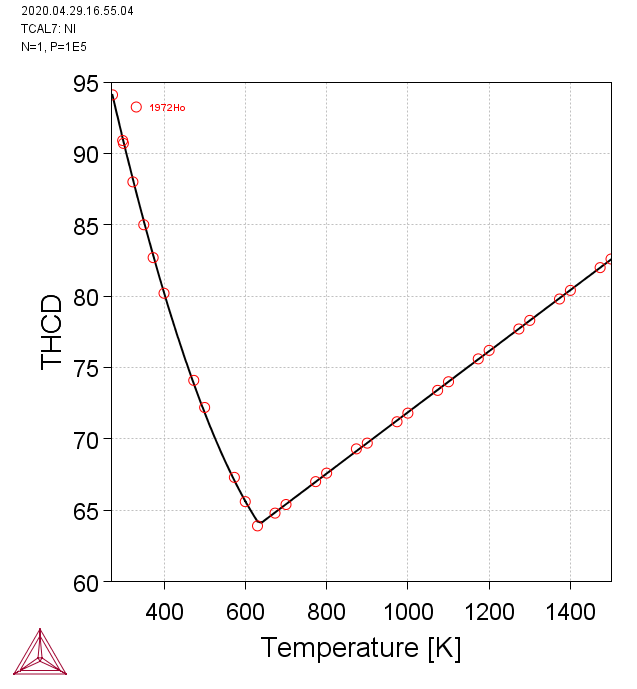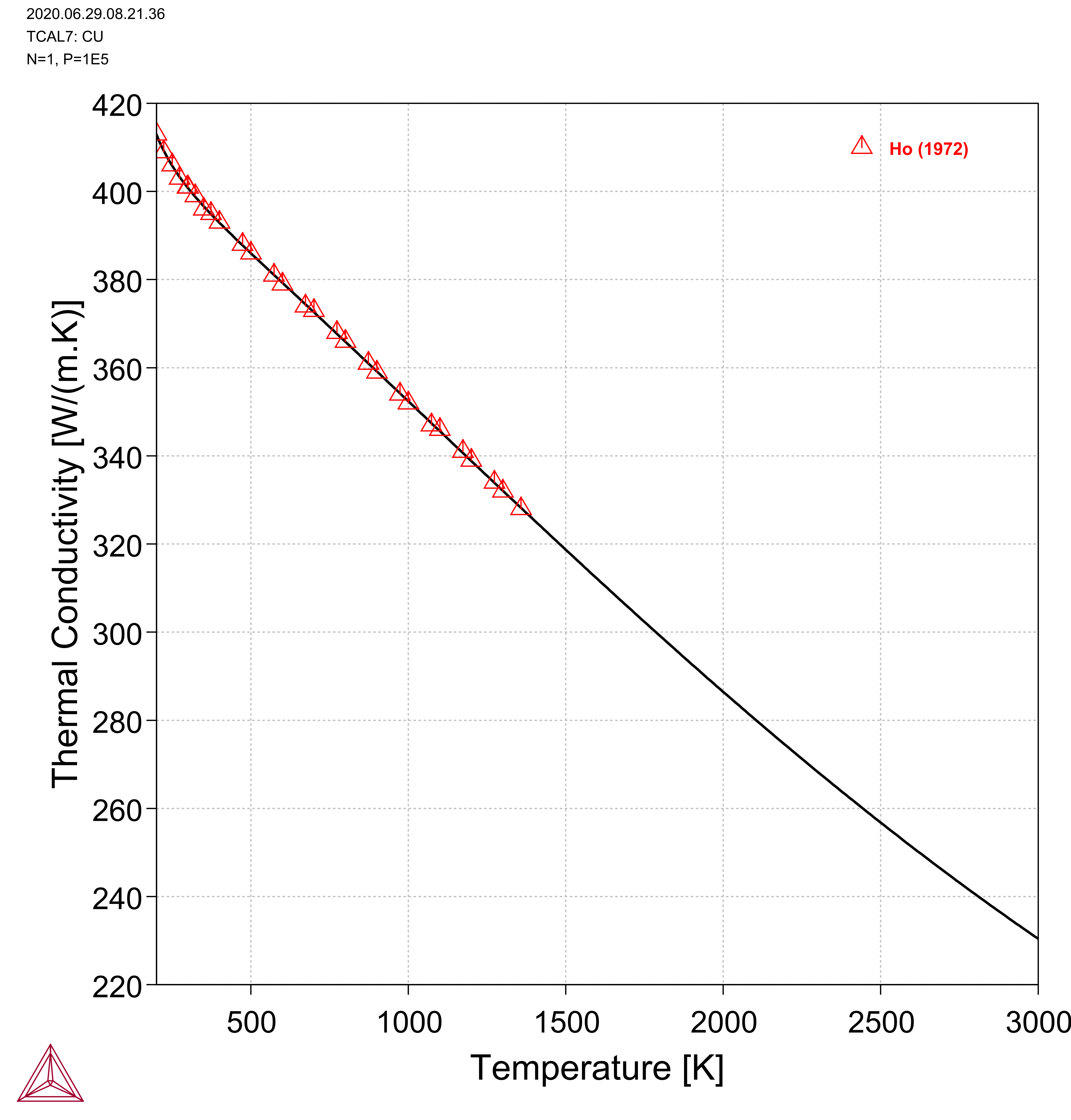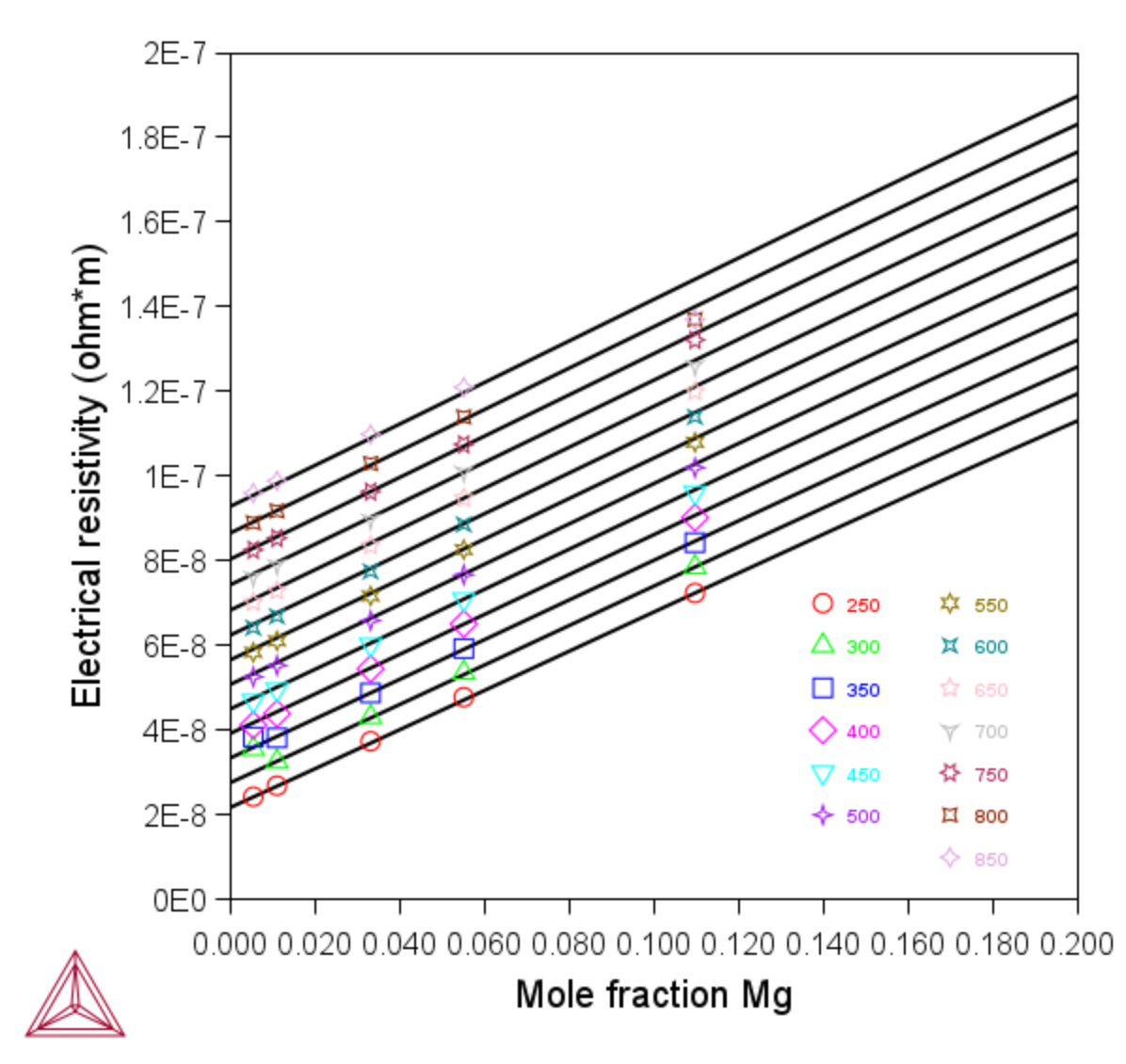Electrical Resistivity and Thermal Conductivity
Electrical resistivity and thermal conductivity of Al alloys are of great importance since the alloys are widely used as electrical cables and radiators in cars and refrigerators. Moreover, thermal conductivity data are needed for designing processes in additive manufacturing.
Using Thermo‑Calc with the TCS Al-based Alloy Database (TCAL), you can calculate the quantities of a phase φ, with the variables ELRS(φ) and THCD(φ) or a system (i.e. alloy), with ELRS and THCD. You can also calculate derived quantities, including electrical conductivity (ELCD), thermal resistivity (THRS) and thermal diffusivity (THDF) in a similar way.
The database includes electrical resistivity and thermal conductivity starting with version 7 (TCAL7).
Al: Electrical Resistivity
In this example, the theoretical model and its parameters is first fitted to the data from [1983Ho] and extrapolated to high temperatures, i.e. 2000 K. A polynomial is then fitted to the data and the extrapolated values and the resulting parameters are stored in the database. Such treatments benefit from the simplicity using polynomials and guarantee the reliability for the extrapolation.
Ni: Electrical Resistivity and Thermal Conductivity
In Figure 2 (left), the calculated electrical resistivity of pure Ni is compared with experimental data from Chu et al. [1982Chu]. There is a magnetic contribution to the resistivity, which is described with

that is implemented in Thermo‑Calc. In Figure 2 (right) the plot compares the calculated thermal conductivity of pure Ni with experimental data from Ho et al. [1972Ho].
Figure 3 shows the contribution due to the spin-disordering scatterings (the red dotted line) and the phonon-electron scatterings (the green dotted line) to the electrical resistivity of an FCC_A1 Ni, in addition to the total electrical resistivity (the light green dotted-dashed line) and the experimental data from [1982Chu] (golden symbols in the plot). The residual resistivity is insignificant and included in the calculated total resistivity. As a user, you have access to the total resistivity via calculations with Thermo‑Calc. This plot may help you understand how the modeling works.
Figure 3: The modeling of electrical resistivity (ELRS) of FCC_A1 Ni compared to experimental data from [1982Chu]. See the text for details.
Cu: Thermal Conductivity
This example is of thermal conductivity for FCC_A1 Cu, which is an important alloying element to several series of aluminum alloys.
The extrapolation might not be valid beyond 3000 K.
Figure 4: Calculated thermal conductivity (THCD) of FCC_A1 Cu compared to experimental data from [1972Ho].
Al-Mg: Electrical Resistivity
The example below shows calculated electrical resistivity of the Al-Mg FCC_A1 solid solution in a wide temperature range from 250 K to 850 K, in comparison with data recommended by Ho et al. [1983Ho], which were from “annealed” alloys. It should be noted that the calculations are performed with the global minimization setting turned off and with all the phases suspended except for FCC_A1. This is because the FCC_A1 single phase, which was obtained after being annealed and quenched, is assumed not to decompose or transform to another phase while it was exposed to the measuring temperatures for a short period of time. Based on the equilibrium Al-Mg phase diagram, it is suspected that certain alloys might contain ALMG_BETA depending on the metallurgy history and the alloy composition.
References
[1972Ho] C. Y. Ho, R. W. Powell, P. E. Liley, Thermal Conductivity of the Elements, J.Phys. Chem. Reference Data 1, 279-421 (1972).
[1982Chu] T. K. Chu, C. Y. Ho, Electrical resistivity of Chromium, Cobalt, Iron, and Nickel- CINDAS Report 60 (West Lafayette, Indiana, 1982).
[1983Ho] C. Y. Ho, M. W. Ackerman, K. Y. Wu, T. N. Havill, R. H. Bogaard, R. A. Matula, S. G. Oh, H. M. James, Electrical Resistivity of Ten Selected Binary Alloy Systems, J. Phys. Chem. Reference Data 12, 183-322 (1983).





